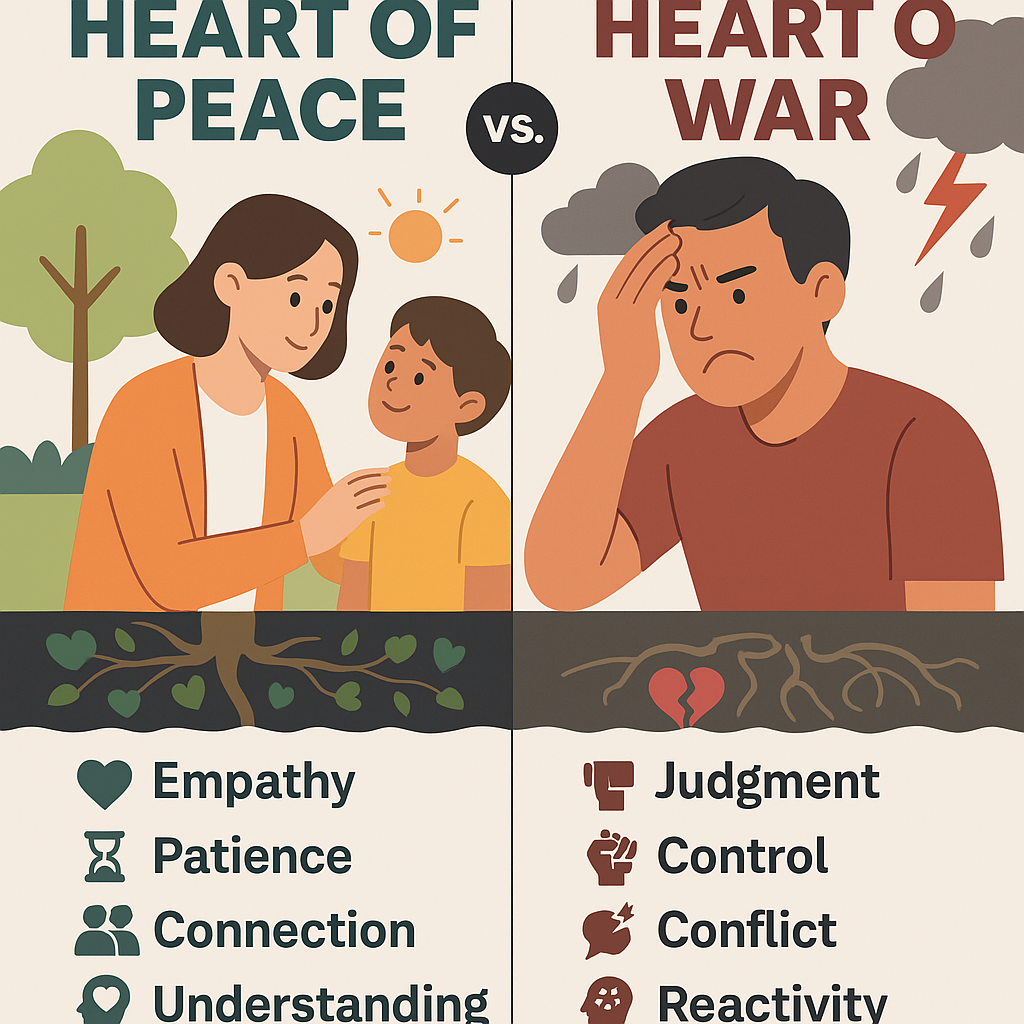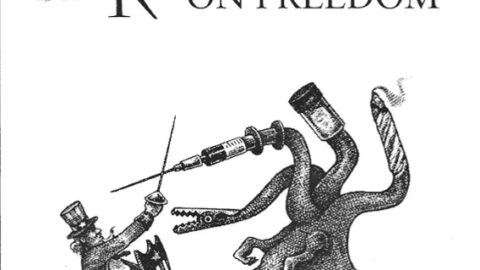In a world steeped in conflict, misunderstanding, and trauma, the distinction between a Heart of Peace and a Heart of War offers not just a psychological model but a moral compass. These terms, rooted in the teachings of the Arbinger Institute, describe our way of being—whether we see others as people with needs and fears like our own (heart of peace) or as obstacles, threats, or irrelevant (heart of war).
When applied across key life domains—self, youth, parenting, relationships, marriage, and God—this lens becomes a guide to healing, connection, and growth.
1. Heart of Peace and Heart of War Toward Oneself
The Internal Battlefield
Many people live in a Heart of War against themselves—judging, condemning, shaming. This inner conflict fuels anxiety, perfectionism, addiction, and paralysis. Trauma and failure often reinforce the belief that we are broken or unworthy. In this mindset, even self-care becomes guilt-ridden or performative.
The Heart of Peace Solution
A Heart of Peace toward oneself acknowledges brokenness without condemnation. It allows us to sit with discomfort, failure, and pain without disowning our worth. We no longer treat our pain as an enemy, but as something to be understood and cared for. This cultivates resilience and authenticity.
2. Heart of Peace with Traumatized Youth
The Trauma-Triggered Response Loop
Youth who’ve been abused, neglected, or abandoned often discharge pain as aggression, manipulation, or withdrawal. This behavior is not personal—it’s a limbic system firing in survival mode. Caregivers with a Heart of War interpret this as defiance or disrespect, escalating control or punishment.
The Heart of Peace Response
When caregivers regulate themselves, lend their prefrontal cortex to dysregulated youth, and remain steady—even through profanity or violence—they become what the child has never known: a safe, trustworthy presence. Reading a youth’s trauma file, remembering their history, or just recognizing the pain under the behavior can soften the heart. Repairing after rupture becomes a sacred act of healing.
3. Heart of Peace in the Parent-Child Relationship
Reacting vs. Responding
Parents exhausted by stress or overwhelmed by fear can lash out, shut down, or control. A child learns to navigate a battlefield rather than a home. Over time, these parents may replicate the very wounds they swore to avoid.
The Heart of Peace Practice
Parenting from a Heart of Peace means recognizing our emotional cues (e.g., snapping, coldness) as signals that we need rest, reflection, or reconnection. It’s not about perfection—it’s about repair. Owning a mistake, calming ourselves, and returning to the relationship models for the child what healing looks like. It teaches them they are safe even when things go wrong.
4. Heart of Peace in Adult Relationships
From Transactional to Transformational
Whether in friendship, community, or work, adults tend to measure others by utility—what they offer, how they offend, or how they compare. This leads to fragile relationships dominated by ego, suspicion, and conditional love—a Heart of War.
Choosing Peace
Relational peace comes from empathy, not agreement. It allows us to listen to what’s beneath the words, hold space in tension, and restore connection after conflict. This doesn’t mean being passive; it means responding from groundedness rather than reactivity. A Heart of Peace refuses to let others’ brokenness dictate our posture toward them.
5. Heart of Peace in Marriage
When Intimacy Feels Unsafe
In marriages where trauma, emotional immaturity, or expectations dominate, a Heart of War creeps in subtly: criticism, withdrawal, scorekeeping, or passive resentment. The marriage becomes a power struggle or business transaction rather than a sacred union.
From Armor to Alignment
A Heart of Peace in marriage sees the spouse not as the problem but as a person in pain, confusion, or growth. It takes emotional maturity to hold tension, pursue repair, and create safety. Peace doesn’t mean silence. It means fighting for the relationship, not against the partner. This peace grows not from sameness but from shared surrender to love, truth, and humility.
6. Heart of Peace Toward God
The War Within
Some relate to God with fear, shame, or duty—a Heart of War rooted in projection. We fear rejection, try to earn love, or view suffering as punishment. Religion becomes a battleground of performance rather than a dwelling place of peace.
Surrendering to a Loving God
A Heart of Peace toward God sees Him not as a tyrant but as a Father who grieves with us, teaches us, and invites us into healing. Peace is found when we let go of the need to prove ourselves and simply rest in relationship. Even in conviction or correction, we know God’s aim is always restoration, never rejection.
Conclusion: The Way Forward
We cannot consistently offer a Heart of Peace to others if we are at war with ourselves or with God. Cultivating peace requires practice—mindfulness, reflection, repair, and compassion. It requires us to recognize that most people (ourselves included) are not evil—they are wounded, afraid, or lost.
And yet, if we stay rooted in peace, we become healers. We become places of safety. And in doing so, we wage a different kind of war—a war against apathy, judgment, and disconnection—by embodying the healing power of love.





